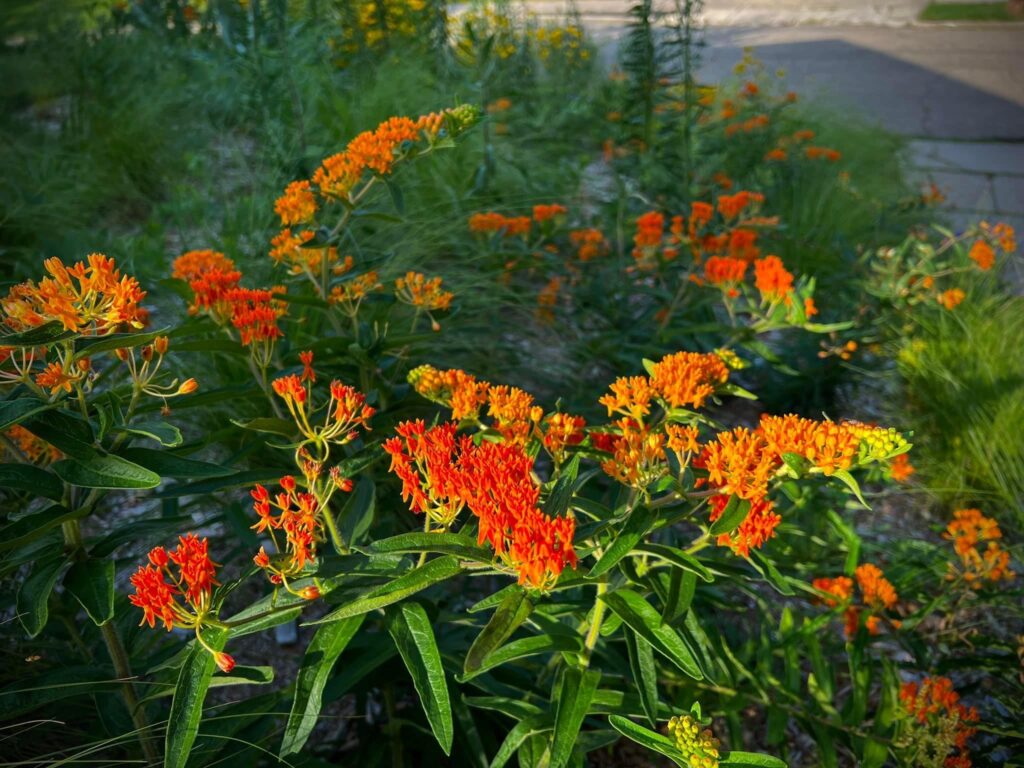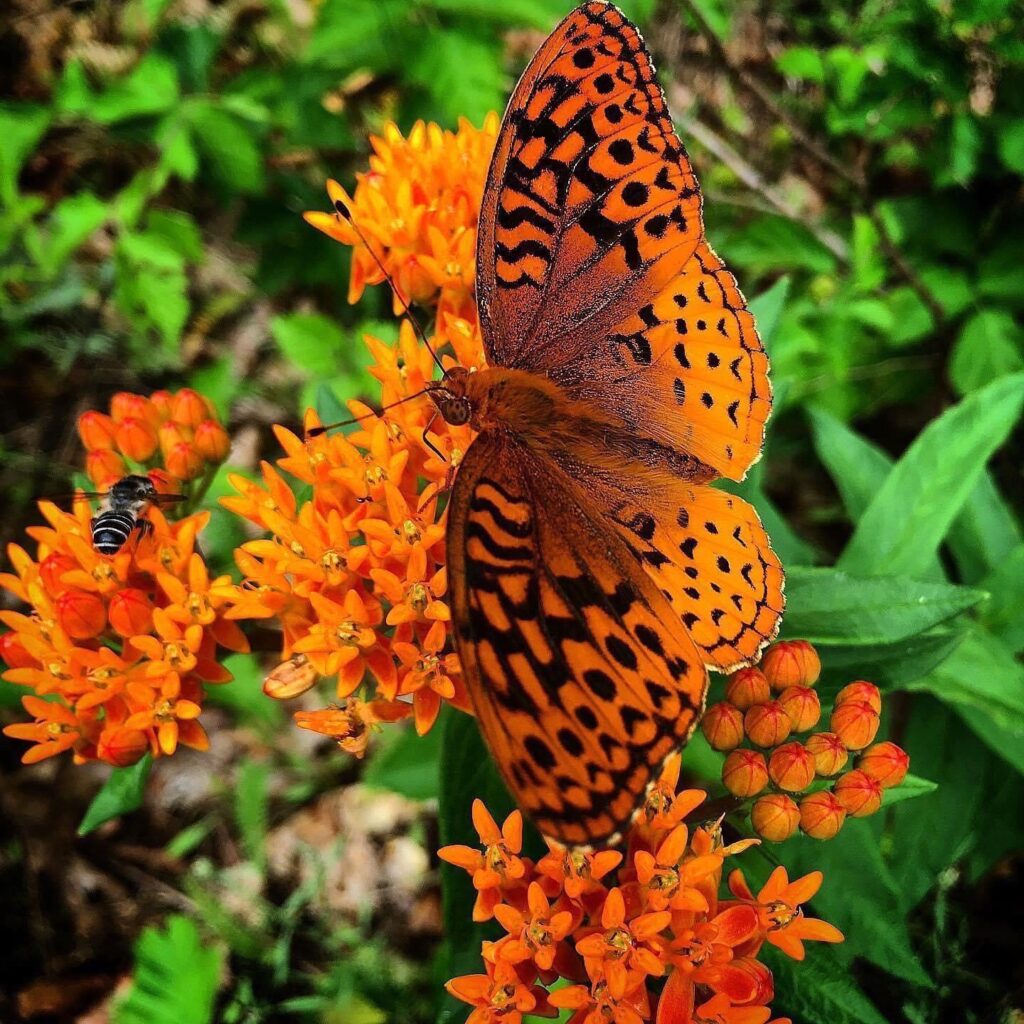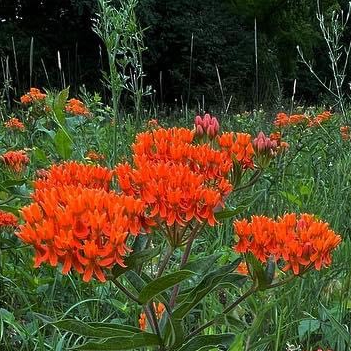by Mike Weis, KAWO member and owner of Dropseed! Native Gardens

One of the most beloved plants for native plant gardeners is Butterfly Milkweed (Asclepias tuberosa). This plant is so popular that even the big box stores carry it—a native with mass appeal. Undoubtedly, those bright orange flowers that attract legions of pollinators are gorgeous and unmistakable. They jump out to our attention in a prairie or even at 70 mph from a roadside landscape, perfectly punctuating the more subdued tones of the green grasses around them.
As a landscaper, I try to incorporate this species in many of my projects, if the conditions will allow for it. This last caveat is very important. A quick scan of an internet search on tuberosa’s maintenance guide suggests that this is a “very easy” species to garden with, a “no brainer,” “very forgiving,” and “highly adaptable.” Yes, I agree, but only if the conditions allow for it.

I had a garden in Chicago for 15 years that I was hell-bent on adding Butterfly Milkweed to because I loved it so much. The only problem was that the conditions did not allow for it. Chicago soil is fairly thick and does not drain well. This is tuberosa’s Kryptonite. The first plantings survived for two years and even flourished but by the third year the roots rotted and it died. I read somewhere that you can add sand and gravel to the planting hole and that would solve the drainage problem so I tried that. No luck, it died after a year. The soil under our Catalpa trees in another portion of the yard was a little leaner so I decided to try it there. It survived longer, four years, but since there wasn’t enough sunlight the growth was weak and the color anemic. I finally wised up to the “right plant for the right place” instruction and gave up. Nature doesn’t care about human determination. The evolutionary adaptations for this species were not going to be bent by an overly enthusiastic fan boy.

I am now finally able to grow this beautiful plant in ideal conditions but I had to move three hours to the east, to the sandy deposits of the glacier moraine landscape of Kalamazoo, Michigan. Here, for the most part, the soil is quite sandy and it drains quickly. My front yard faces southwest on a slope that cooks in the summer sun. Perfect conditions for Butterfly Milkweed. My garden is less than three years old but it already has over twenty healthy tuberosa plants scattered throughout the beds. Right about the time of the summer solstice is when they reach peak orange saturation. It’s gorgeous. Not to mention that my yard is a thriving Monarch habitat because of this important host plant.
Within these conditions this species is definitely a “no brainer.” Some gardeners still struggle with the plant, but that’s because of either operator errors or operator impatience. I work seasonally at Hidden Savanna Native Plant Nursery and one of the most common complaints that we get has to do with Butterfly Milkweed. “The entire plug tray that I planted died” is what I overheard one customer tell owner Chad Hughson. The first response from him was “Tell me about your irrigation process.” “Simple, we have an automated irrigation system that is scheduled to run every morning for 30 minutes during the summer months.” This customer drowned the plants to death.

The other complaint about this species usually goes like this: “I planted it last year and it never came back up. Is it really a perennial?” These questions typically arise in May because tuberosa is notorious for taking its sweet time to emerge from dormancy. Sometimes I don’t witness any growth until the first week of June. This is something I keep in mind when designing gardens using this species. I want something to occupy that space until the Butterfly Milkweed explodes from its underground slumber but I don’t want anything there that would limit its growth with competition. A few options that I’ve used are Junegrass, Poverty Oats Grass, Porcupine Grass, Shooting Star, Pussytoes, Prickly Pear Cactus, Prairie Smoke, Wild Lupine, Hoary Puccoon, Carex eburnea or brevior, Hairy Beardtongue, Lanceleaf Coreopsis. This is what is known as successional planting, or designing in temporal layers. On the other end of the succession arc, when tuberosa is exhausting its beautiful orange blooms in mid to late July, you’ll need someone to pass the bloom baton to. It’s got to be a late season bloomer that doesn’t grow too thick and tall so as to not obscure the beautiful structure of the milkweed because this plant looks great even when it’s not in bloom – the seed pods look like little candles. A few ideas are Dwarf Blazingstar, Savanna Blazingstar, Rough Blazingstar, Upland White Goldenrod, Prairie Dropseed (the most perfect companion, along with Pale Purple Coneflower for the design trifecta!), Prairie Coreopsis, Purple Prairie Clover, Sideoats Grama, Showy Goldenrod, Nodding Wild Onion, Leadplant, Whorled Milkweed, Slender Mountain Mint, Sky Blue Aster, and Wild Petunia.

Butterfly Milkweed has a deep taproot so be sure to choose your planting site wisely because once it’s rooted-in it will not like to be disturbed. Also, don’t be tempted by those cheap price tags on plants at big box stores. It’s important to source Asclepias tuberosa plants that were grown with local genotype; otherwise the phenology will be off for the pollinators if the plant was grown from seed from another region. Always purchase native plants from reputable local nurseries.
